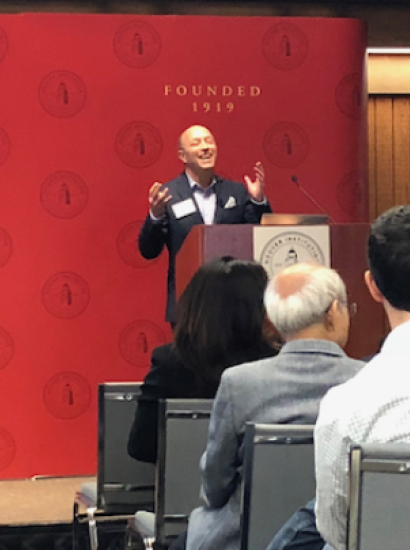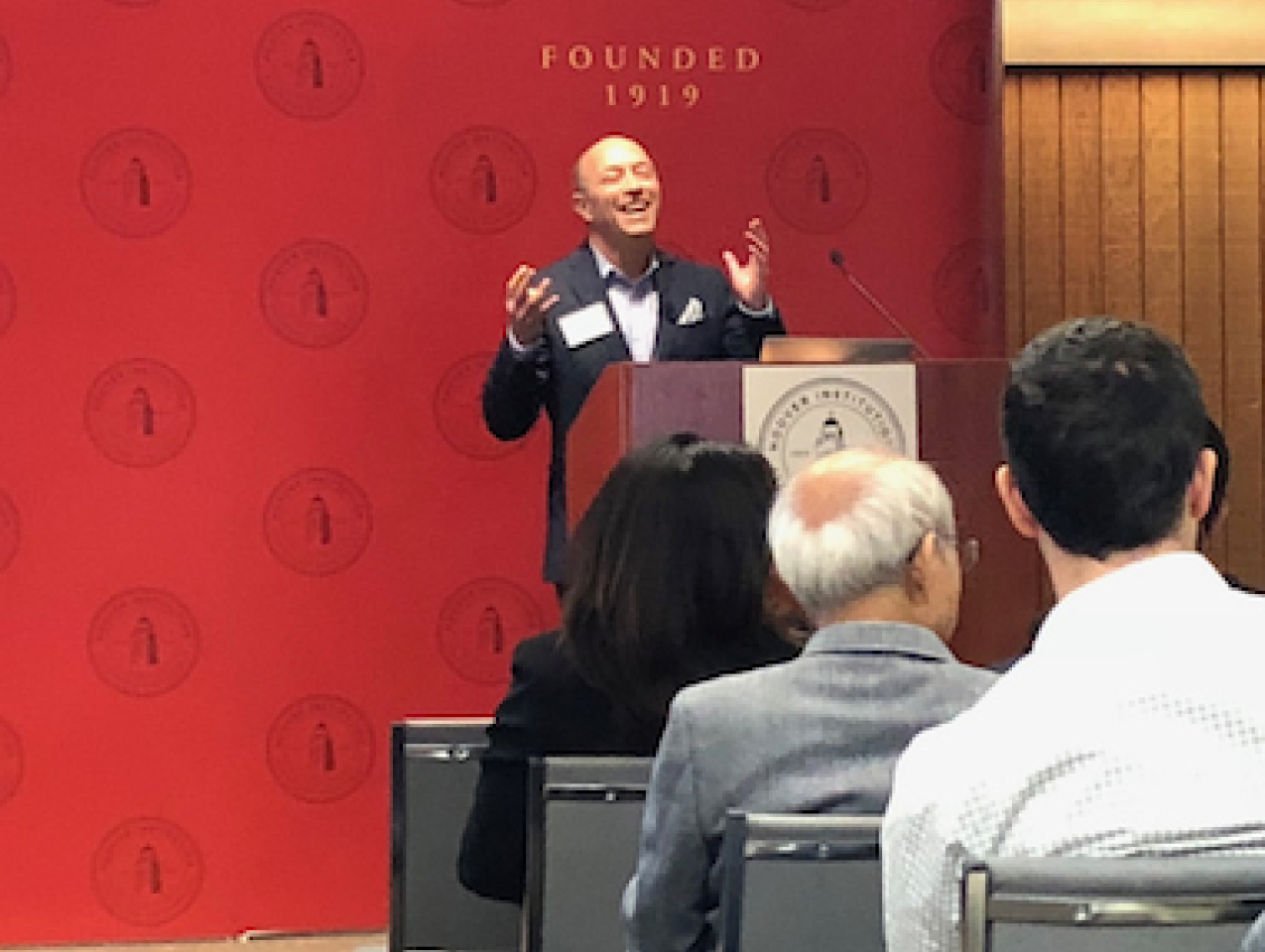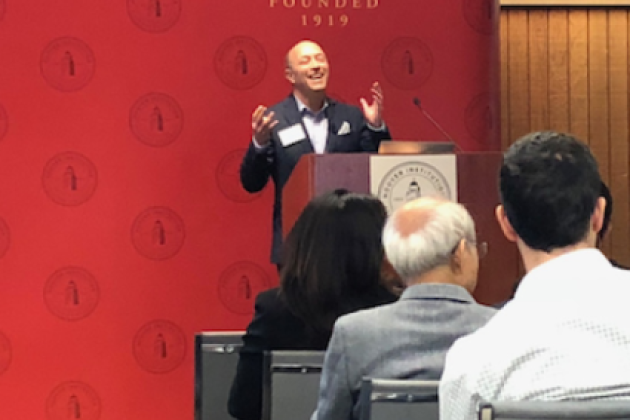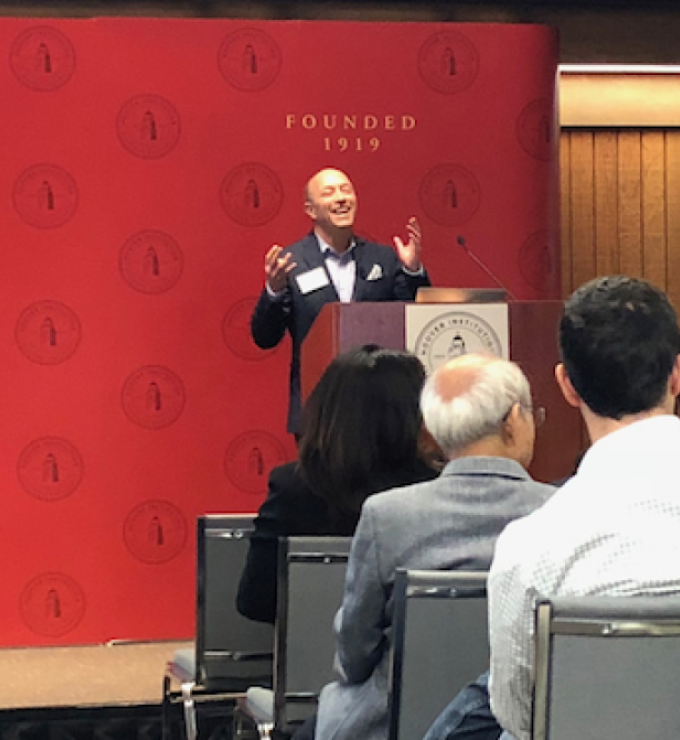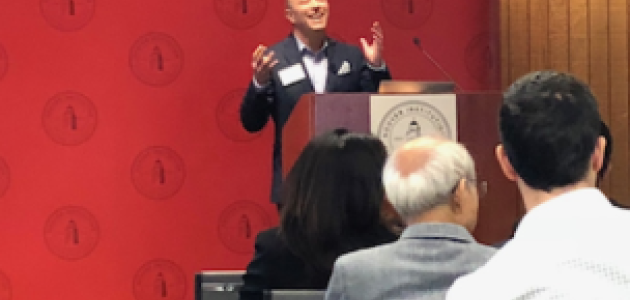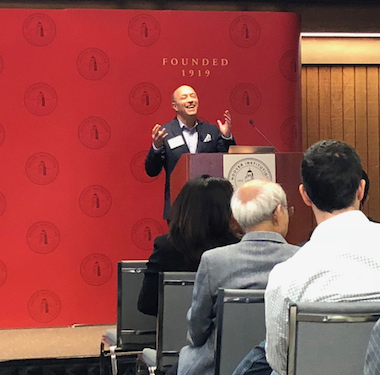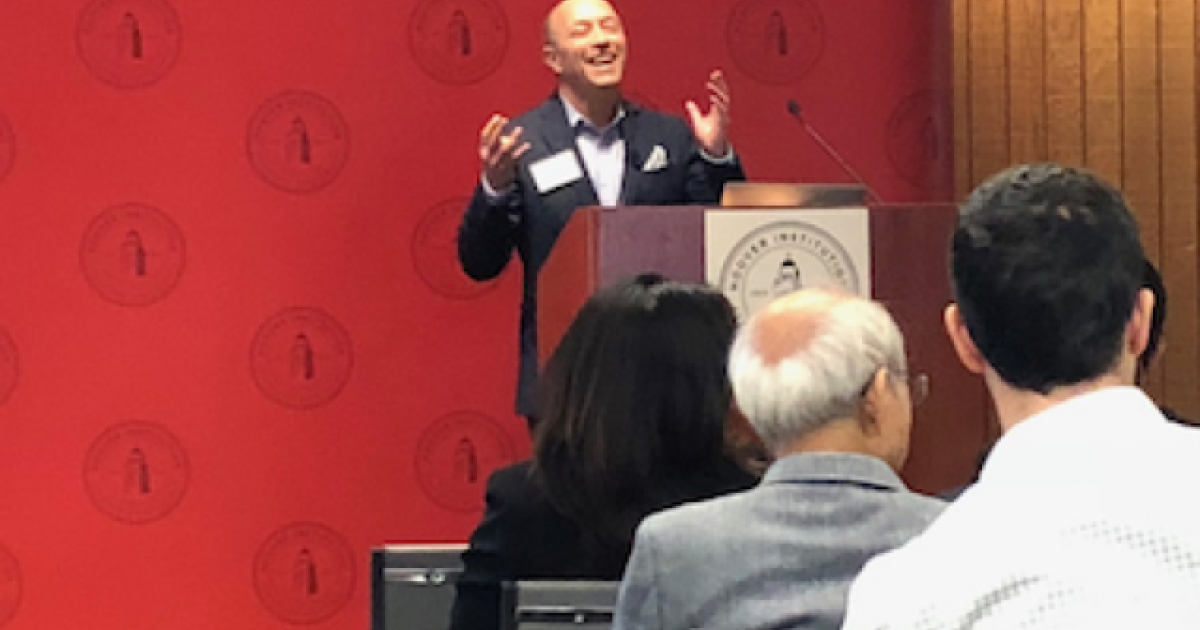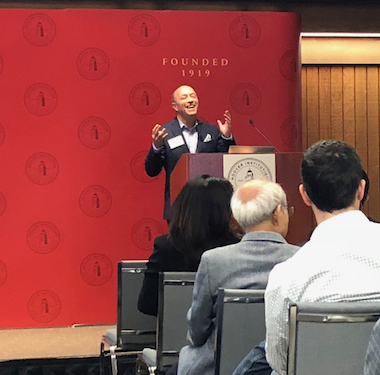
In their first-ever collaboration in fifty years, the Center for East Asian Studies (CEAS) and Hoover Institution Library & Archives jointly held a two-day celebration of a trifecta of anniversaries: the CEAS’s 50th Anniversary, Hoover’s centennial and, the 150th anniversary of the Meiji Restoration in Japan. The event was made possible by the generous support of the Consulate-General of Japan in San Francisco.
On November 1, Professor Mark Ravina of Emory University, who obtained both an M.A at CEAS and a Ph.D. in History from Stanford, kicked off the celebration by delivering an energetic keynote lecture on “Meiji Japan and the ‘Long-Nineteenth Century,’ ” to an enthralled audience at Stauffer Auditorium in Herbert Hoover Memorial Building. See The Stanford Daily article for more information.
The following day on November 2, a group of distinguished Stanford alumni and affiliates convened in a symposium on “Japan in the Pacific World: Rethinking Japan’s Global Emergence in the Meiji Period and Beyond.” The participants represented multiple generations of Japan historians, from Peter Duus (William E. Bonsall Professor of History) who had advised many of the invited scholars during their doctoral study, to David Fedman, a recent Ph.D. who is now Assistant Professor of Japanese History at the University of California, Irvine.
The first panel on “Japan in the Long Nineteenth Century” set the tone for discussion by examining Japan before, during, and after the Meiji Restoration in a global context. Challenging the dichotomized view of Tokugawa isolation and Meiji rupture into modernity, Kären Wigen (Frances & Charles Field Professor of History) charted a deeper history of Japanese engagement with the Pacific through the production of world maps, while Robert Hellyer (Associate Professor of History, Wake Forest University) discussed the role of former samurai in the transpacific export of Japanese tea to the United States. Focusing on the era of jiyūminken undō (freedom and popular rights movement), Mark Ravina analyzed the language used in several hundred memorials (kenpakusho) submitted to the Meiji government by means of text mining. The discussion was moderated by Michael Auslin, who has recently begun his tenure as Williams-Griffis Fellow in Contemporary Asia at Hoover Institution.
Focusing on the age of empire, the second panel on “Japan in the Imperial Pacific” examined various facets of Japanese transpacific expansion and entanglement with the West. Deploying a comparative approach to empire, Robert Tierney (Professor of Japanese Literature, University of Illinois at Urbana-Champaign) explained how Japan, as a mimetic imperialist, forged a discursive triad of Japan (colonizer), Asia (colonized), and the West as an implicit third side. Drawing from his book manuscript in progress, David Fedman examined the trans-Pacific timber trade through which Japan became “an empire of forestry,” while Jordan Sand (Professor of Japanese History and Culture, Georgetown University) discussed the roles of pigs that accompanied human migrations in shaping conceptions of property, economy, and family structure on the islands of Okinawa, Hawaii and parts of Southeast Asia.
The third panel on “Japan at War” interrogated the relationship between Japan’s imperial expansion and war in the Asia-Pacific. Highlighting the role of cultural production in the shaping of public discourse and memory of war, Sabine Frühstück (Professor of Japanese Studies, University of California at Santa Barbara) explored the symbolic value of children in imperial and wartime politics, Takashi Fujitani (Dr. David Chu Chair in Asia Pacific Studies and Professor of History, Toronto University) uncovered the shared but forgotten history of US and Japan as Pacific empires, and Tosh Minohara (Professor of International History and Security Studies, Kōbe University) discussed the recent resurgence of historical revisionism in the writing of US-Japan relations surrounding Pearl Harbor.
The last panel, organized and moderated by Yuma Totani (Professor of Modern Japanese History, University of Hawaii; Hoover Fellow), introduced the audience to the world-class and rare collections on Japanese history at East Asian Library managed by Regan Murphy Kao (Head of Special Collections and Curator for the Japanese Collection), and to the Japan and Japanese Diaspora Collections at Hoover curated by Kay Ueda, the first-ever curator of the Japanese Diaspora Initiative at the Hoover Institution Library & Archives. Moreover, Tom Cramer (Director of Digital Library Systems & Services and Chief Technology Strategist at Stanford University Libraries) explained the “International Image Interoperability Framework (IIIF),” a revolutionary approach to digital scholarship which is increasingly adopted by libraries and institutes in Japan and around the globe.

The symposium reflected the broader hope of its organizers that CEAS and Hoover, through their close collaboration, will further expand the role of Stanford as the transpacific node of Japanese studies in the United States. “With the global ascendancy of Asia in recent decades, Japan’s engagement with the Pacific world has gained a new valence among scholars,” according to Jun Uchida, Director of CEAS who conceived of the two-day anniversary event and took the lead in organizing the symposium with Kay Ueda. The symposium not only allowed the participants to “rethink Japanese history in the broader framework of the Pacific,” but it also provided a unique opportunity “for CEAS and Hoover to reflect on their role and stakes at Stanford as a Pacific-facing hub of intellectual exchange with Asia.”
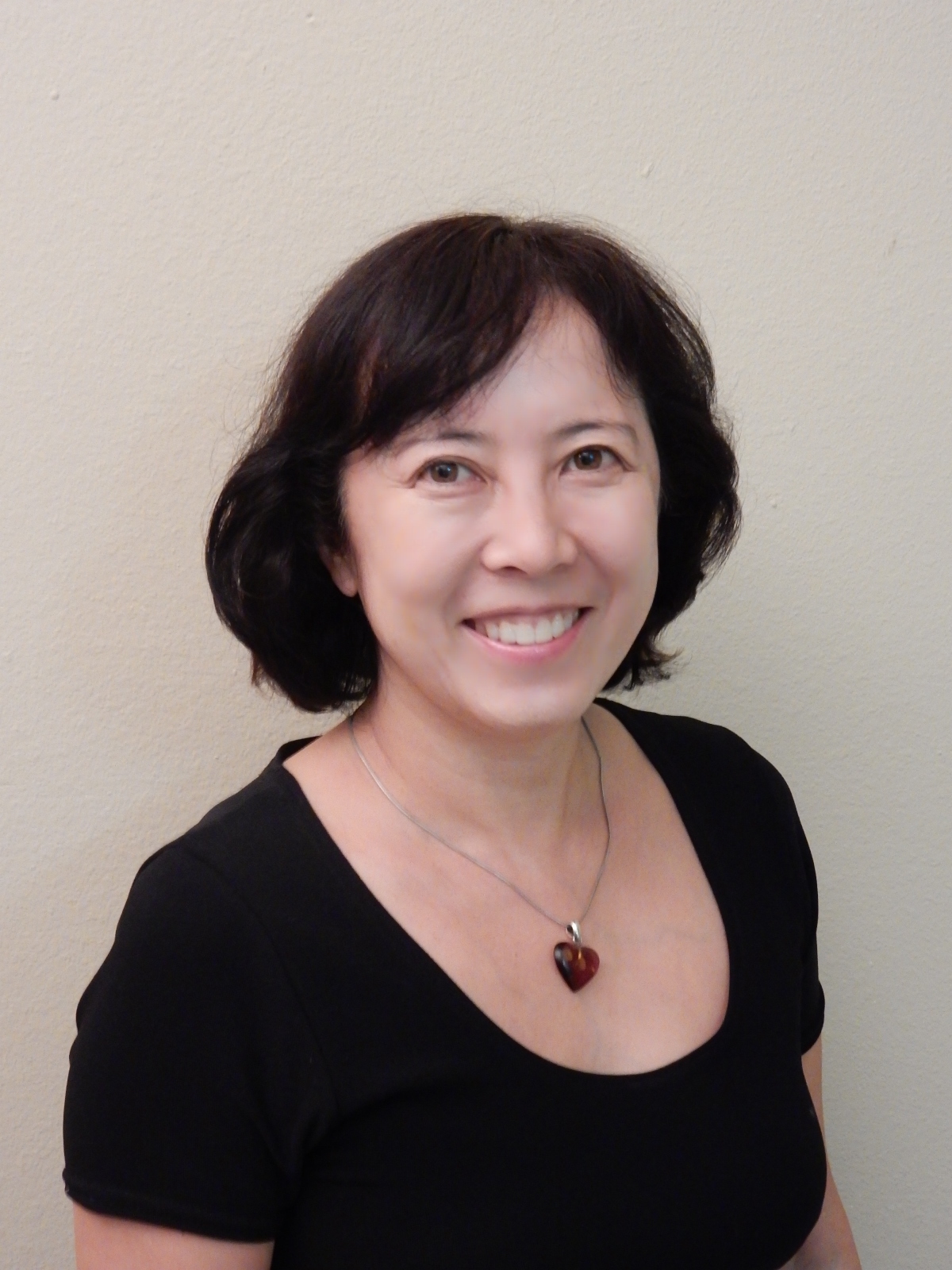 Kaoru "Kay" Ueda PhD
Kaoru "Kay" Ueda PhD
Kaoru “Kay” Ueda (B.A. Kawansei Gakuin University, MBA, University of Chicago, Ph.D., Boston University) has unique experience both in business and academic worlds.





